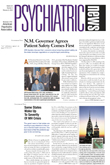What enables the nation’s health care safety net to survive? Fortunately, it isn’t only money, according to a recent analysis by the Center for Health System Change (HSC).
Every two years HSC researchers interview individuals involved directly and indirectly in providing safety-net services to low-income people in 12 nationally representative communities.
According to HSC’s issue brief, “The Health Care Safety Net: Money Matters but Savvy Leadership Counts,” the backbone of the safety network is “providers, such as community health centers and public hospitals, whose main mission is to provide care to low-income people, including the uninsured.”
During the last two years, the safety net has faced increasing economic pressure because of its dependence on state and local tax revenues. Demands for its services are increasing because of the growing number of uninsured Americans.
HSC, which has been tracking the safety net’s fate since 1996, found that “most safety net providers in the 12 communities have become stronger and improved their business practices. They have increased capacity by enhancing and expanding facilities and services and strengthened their finances to protect future viability. Generally, these changes have increased primary care and hospital services available to low-income people, although the safety net remains much more limited in providing specialty, mental health, and dental services.”
Business acumen is one of the key attributes that promote viability. Leaders of safety-net organizations have developed into or been replaced by entrepreneurial business managers who are more effective at day-to-day operations and fiscal strategizing. Among the strategies identified by these leaders are to streamline operations and improve productivity, improve payment collection, leverage economies of scale and share technical expertise, attract more privately and publicly insured patients to improve payer mix, and raise funds and apply for grants.
Managers of a public hospital in New Jersey, for example, improved the hospital’s accounting system so that they were better able to demonstrate the need for additional state charity-care funds. A community health center in Syracuse, N.Y., created a foundation to raise money for equipment and capital projects and formed partnerships with other groups or institutions.
“No margin, no mission” has become a mantra conveying the idea that without financial viability, institutions will be unable to fulfill their mission.
Development of community support and exercise of political leadership also help strengthen the safety net. Ballot initiatives have become a means of demonstrating that support. In Phoenix, a seriously underfunded public hospital was caring for the city’s uninsured and a growing immigrant population. Advocates mobilized the support of the community and other hospitals to obtain the state legislature’s approval for a ballot initiative that would establish a tax district to generate revenues for the hospital.
In Greenville, S.C., an alliance of health and business organizations and private foundations served as a catalyst to coordinate new clinic-based and private-physician services for low-income people.
Governors have promoted and protected public-insurance expansions. Arkansas Gov. Mike Huckabee (R), for example, fought successfully for new taxes to avoid cuts in Medicaid coverage for children.
HSC researchers also acknowledged challenges for the safety net in the coming years. Larger state and local budget deficits in Fiscal 2004 are often leading to deeper cuts in health care. Some state and local governments also are paring back the amount of direct safety-net funding they provide through uncompensated care pools and other mechanisms.
Demands for safety-net care will grow as people lose private insurance because of unemployment and rising health insurance premiums, and public insurance because of state budget cuts. HSC found that between 1997 and 2001 the proportion of physicians nationally providing any charity care declined from 76 percent to 72 percent, causing further pressure on the net.
The 12 communities that HSC studies are Syracuse, N.Y.; Greenville, S.C.; Boston; Cleveland; Indianapolis; Lansing, Mich.; Little Rock, Ark.; Miami; northern New Jersey; Orange County, Calif.; Phoenix; and Seattle.
“The Health Care Safety Net: Money Matters but Savvy Leadership Counts” is posted online at www.hschange.org/CONTENT/591/. ▪
